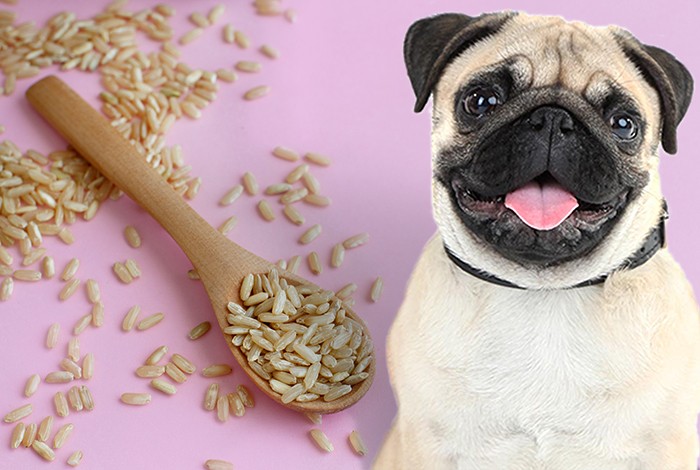Brown rice is one of the healthiest rice varieties among the 4,000 rice variations. So, can dogs eat brown rice too? Absolutely! Brown rice contains many essential nutrients. It is rich in antioxidants, carbohydrates, fiber, B vitamins, calcium, phosphorus, and selenium.
Read on to learn more about the health benefits of brown rice for dogs and what sets it apart from the common white rice.
Why Is Brown Rice Good for Dogs?
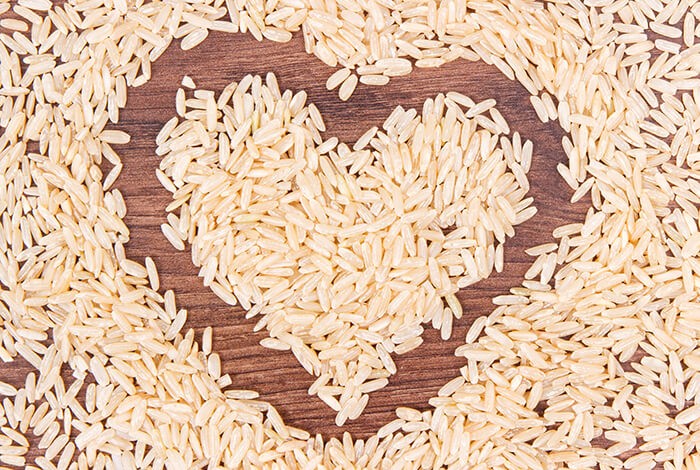
Brown rice is widely used in many commercial dog foods. It is a good source of amino acids, carbohydrates, and fiber, which help regulate dogs’ metabolism and keep their digestive system healthy. In addition, brown rice helps dogs produce firmer stools and increases fat and cholesterol excretion.
Brown rice is also abundant in vitamins and minerals. It contains vitamin B6, thiamine, and riboflavin. These are B complex vitamins that are vital for nerve cell growth, development, and repair. They facilitate the proper production and function of certain enzymes as well.
Vitamin D, together with calcium, is vital for proper bone growth and maintenance. They are also necessary for keeping dogs’ teeth and skeletal tissues in top shape.
Brown rice is also a good source of magnesium, manganese, phosphorus, potassium, sodium, and selenium. Each mineral plays an important role in maintaining dogs’ overall health and helps to boost their energy levels and promote a healthy heart.
Brown rice contains high antioxidants that regulate blood glucose levels, preventing blood sugar levels from suddenly spiking up. Since it has a lower glycemic index compared to other rice varieties, it is a suitable option for dogs with diabetes.
Brown or White Rice for Dogs—Which Is Better?
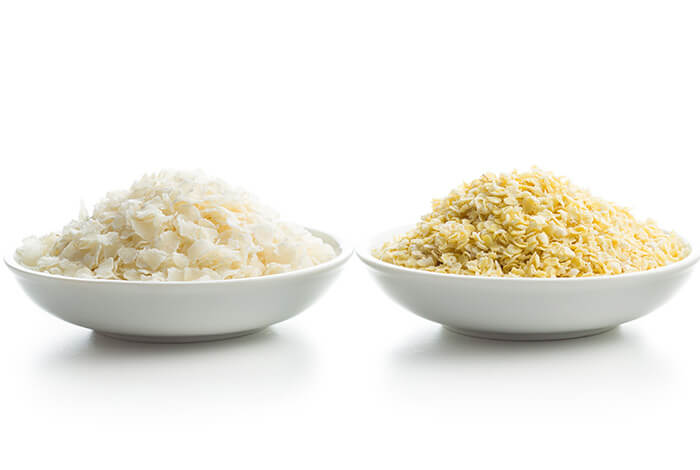
White vs. Brown rice – Differences
Brown rice is an all-natural whole food. It is a whole grain of rice. Since it doesn’t undergo any refinement process, it still contains the bran, the fibrous husk cover, and the germ layer covering the grain.
Brown rice is unrefined due to its lack of cosmetic refining, resulting in its nutritional value remaining intact. It is what makes brown rice one of the healthiest rice varieties.
Meanwhile, white rice undergoes a thorough refinement process that polishes its outermost shell and removes most of the germ layer. This process strips off most of the fiber and nutrients found in the grains.
Synthetic vitamins are then added to replace the lost vitamins and minerals. However, it doesn’t make up for the natural nutritional contents of white rice that were stripped off during the process.
Moreover, white rice also ranks high on the blood glycemic index scale, which means it can quickly trigger an increase in blood sugar and contribute to the development of type 2 diabetes.
Considering all these facts, it is clear that brown rice is a better choice than white rice for our dogs.
Can Dogs Eat Brown Rice When They Have Diarrhea?
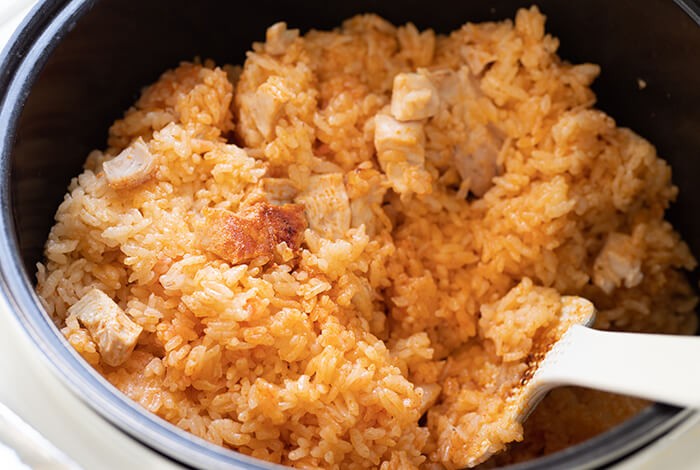
In cases where your dog experiences digestive problems, many people choose to give rice to their dogs as a home remedy. But brown rice isn’t the best option for this situation. It is high in fiber which may irritate your dog’s bowel and worsen his condition.
White rice proves to be advantageous in easing diarrhea symptoms. Feeding white rice will lessen the disruption to your dog’s digestive tract because it is low in fiber. Therefore, it is much easier for his stomach to digest compared to brown rice.
Freshly cooked boiled white rice, rice balls, or rice water are good remedies for a dog with an upset stomach or diarrhea. Mix rice with lean cooked chicken breast or some plain mashed pumpkin. These are all easily digestible foods for your furry friend, which help bring his bowel movements back to normal.
How Much Brown Rice Can Dogs Have?
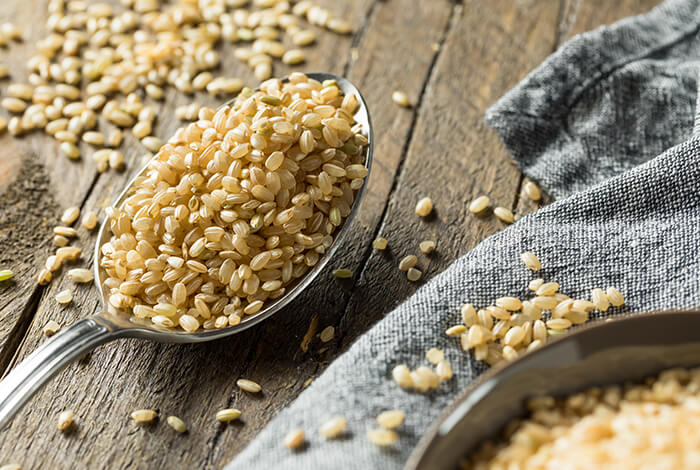
Brown rice is good for a dog, but if it is served in large quantities, it can adversely affect a dog’s health. It is high in carbohydrates, and eating too much can lead to weight gain and obesity.
Therefore, feed your dog brown rice in moderation. You can divide it into small portions to make it less heavy on the stomach.
- For dogs weighing less than 5 pounds, divide half a cup of cooked brown rice between meals in one day.
- For a mid-size dog that weighs around 30–50 pounds, 1.5–2 cups of cooked brown.
- For a large dog that weighs more than 100 pounds, split 4–5 cups of cooked rice over 2–3 meals during the day.
You may also need to consider your dog’s energy levels. For example, a large dog with a sedentary lifestyle may need to be fed a smaller amount of rice. On the other hand, a large working dog may need to consume more brown rice than a same-size sedentary dog.
If it’s your first time incorporating brown rice into your dog’s diet, start by feeding your dog rice in small amounts. Doing this will give his stomach time to adjust and prevent digestive problems. You can gradually increase its quantity after a few days if your pooch doesn’t exhibit stomach issues.
It is also important to note that some dogs are allergic to grains. If this is the case for your dog, he should be kept on a grain-free diet.
How to Prepare Brown Rice for Your Dog
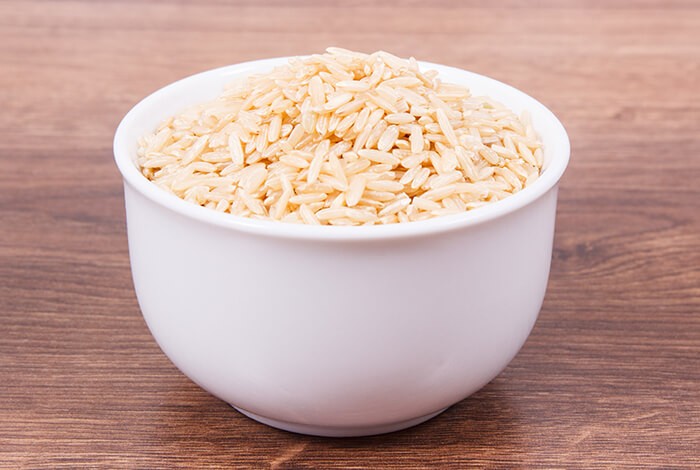
Cooking brown rice for Fido is easy. Here are the five simple steps:
- Shop for high-quality organic brown rice. It is a safer and healthier option and less prone to chemical exposure.
- Pour four cups of water into a pot, set the stove’s temperature too high, and wait for the water to boil.
- Add one cup of brown rice to the pot. Stir it to prevent the grain from sticking to the bottom of the pot.
- Brown rice is prone to arsenic contamination. So, boil the brown rice for 5 minutes, then discard the water afterward. This extra step will help to reduce the amount of arsenic significantly.
- Once the water boils again, it’s time to set the cooker on low and cover the pot. Then, let it boil for another twenty to thirty minutes.
- Drain the water and allow the brown rice to cool. Then, mix it with your dog’s food and serve it.
Cook brown rice without additional ingredients such as oil, spices, and seasoning. These ingredients may cause digestive upset and other long-term health issues, including pancreatitis and obesity. Avoid mixing garlic, chives, and onions, too, since they are toxic to dogs.
Is Brown Rice Suitable for Your Dog?
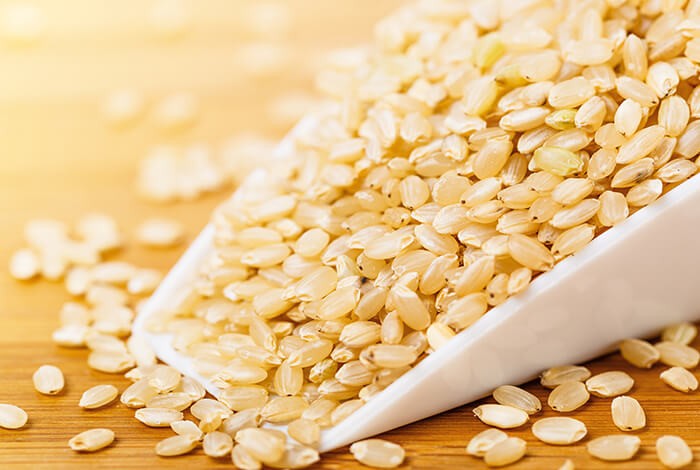
Every pooch has his own nutritional requirements. For instance, brown rice may be better for a healthy and active dog in his prime than for an obese senior dog.
It is also a good idea to consult your vet before incorporating brown rice into his diet. Remember, what works for some dogs may not work for others since they have different health conditions.

